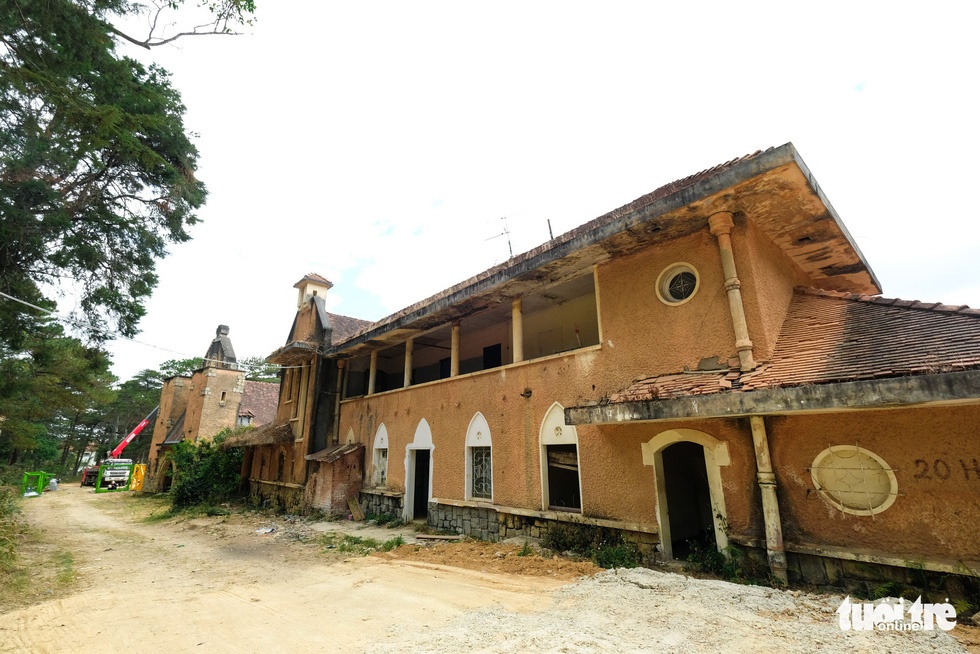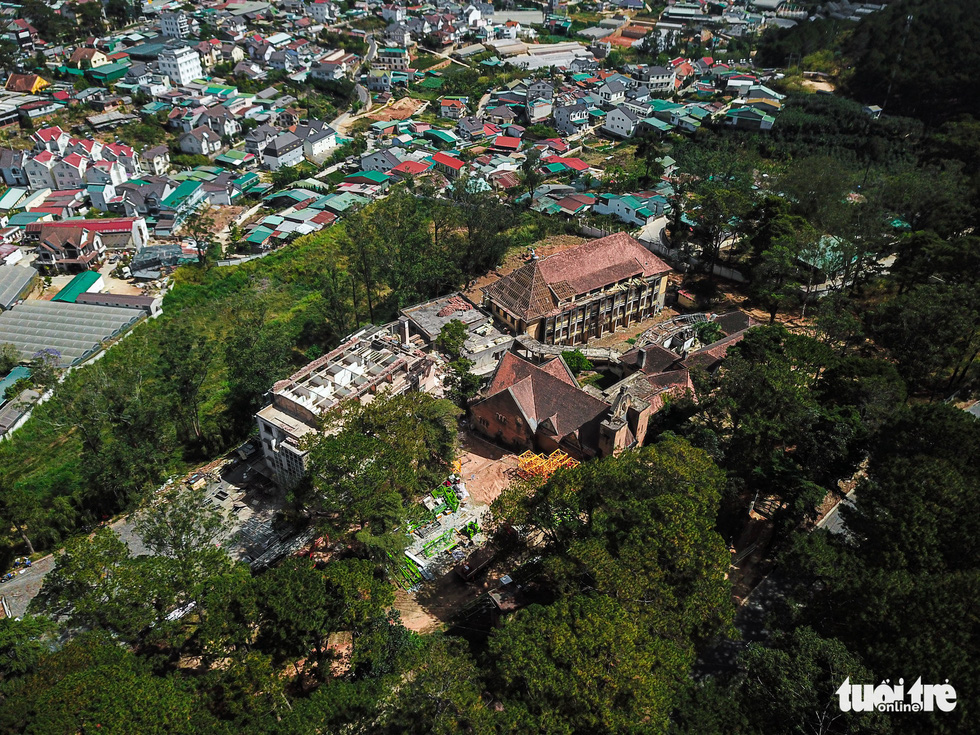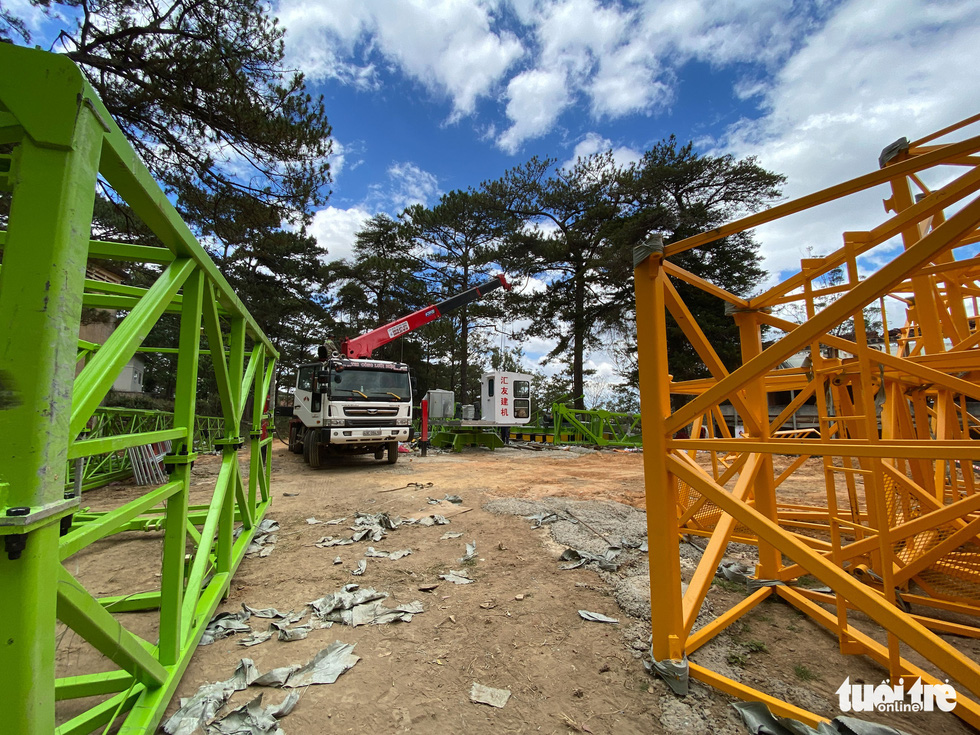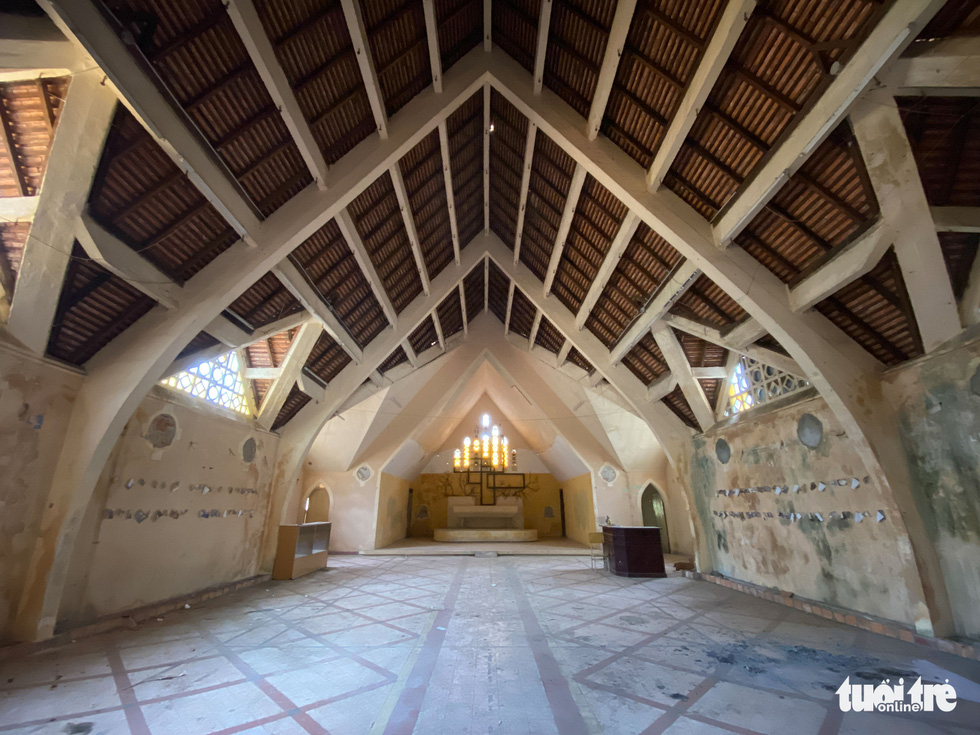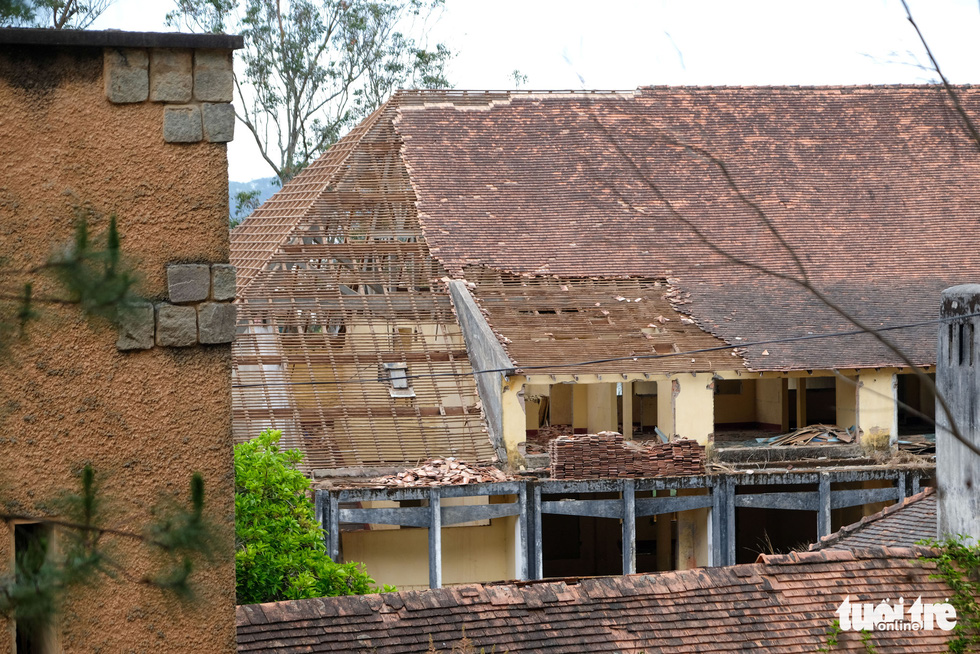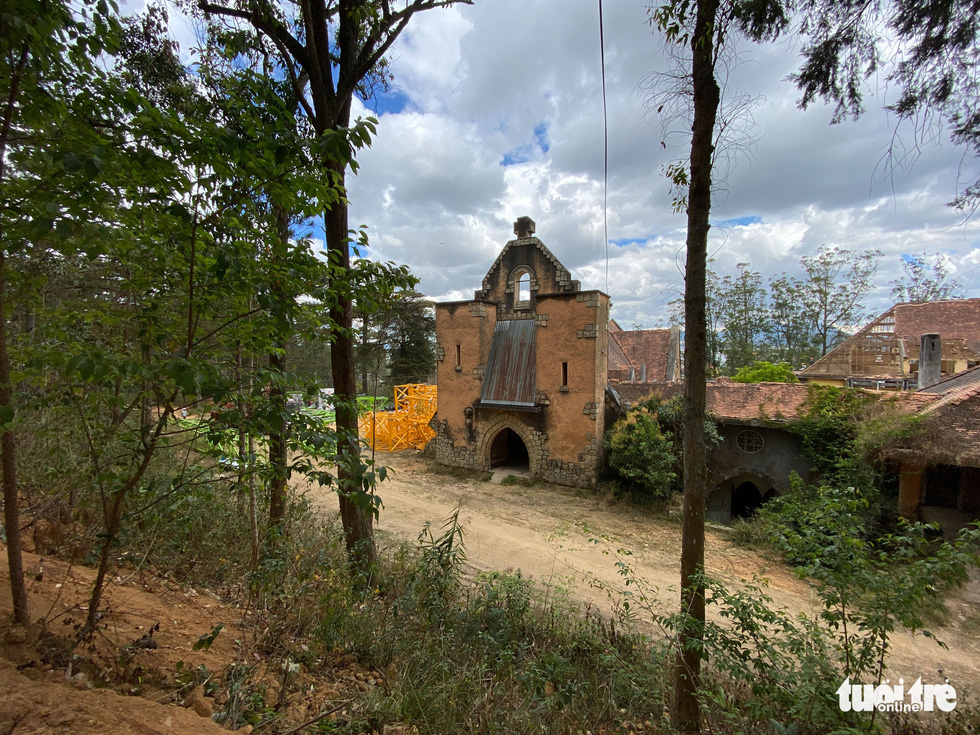The chapel and residential quarters of Franciscaines Misionnaires de Marie are situated in Da Lat, the capital of Lam Dong Province. Covering an impressive area of over seven hectares, this complex is located between Tran Quang Dieu and Hung Vuong Streets.
The iconic chapel has long served as a source of inspiration for Vietnamese artists and photographers, who have skillfully reimagined its beauty in numerous works of art over the years.
|
|
| The mission is located in an area surrounded by pine trees near the center of Da Lat. Photo: Duc Tho / Tuoi Tre |
The structure is severely damaged and in a state of disrepair.
According to writer Nguyen Vinh Nguyen, the Benedictine complex was constructed in the late 1930s and early 1940s by French architects Alexandre Leonard and Paul Veysseyre. This marked the beginning of Benedictine missionaries from the Western world venturing into Vietnam.
In 1954, the missionaries entrusted the complex to the Franciscan nuns before relocating to Hue in the central region to establish the Thien An Monastery.
Over the subsequent years, the nuns collaborated with Vietnamese architect Pham Khanh Chu to develop supplementary classrooms situated at the rear of the current complex.
According to Tran Ngoc Trac, the former head of the Lam Dong Province Arts and Literature Association, the mission was originally known as the Viet Nu Commercial School in 1969.
The seven-hectare complex was officially transferred to the government in 1979.
|
|
| Machines are brought to the mission to remove severely destroyed areas. Photo: Duc Tho / Tuoi Tre |
In the ensuing years, the two classroom blocks and residential building of the school have undergone various transformations. Initially serving as the province’s supplementary school, it later operated as the Lam Vien Hotel, and ultimately became known as Tran Phu High School.
In the 1980s, a new building was constructed between the two existing blocks.
The chapel and monastery have since served various purposes, including use as a warehouse, sports hall, and residential building.
After a period of neglect, the site was later acquired by the Ho Chi Minh City University of Architecture to be developed into a campus.
At one point, approximately 20 families unlawfully took up residence in the chapel, however, they were ultimately compelled to vacate by the local authorities.
|
|
| Inside the main chapel. Photo: Duc Tho / Tuoi Tre |
Pulling out all the stops
The Ho Chi Minh City University of Architecture is currently managing the complex and has developed plans to restore the site.
“We are diligently working to safeguard the artistic significance of the monastery,” stated the school’s representative.
“We anticipate that this development will serve as a significant structure on the Da Lat campus of our university, providing a unique training opportunity for aspiring architects from the Central Highlands and surrounding regions.”
The renovation plans for the complex include the construction of a new amphitheater and the restoration of dilapidated structures.
The chapel will be repurposed into a sophisticated library and versatile meeting hall where engaging architecture and art workshops will take place. Additionally, the residential structures will serve as comfortable boarding houses for esteemed lecturers.
|
|
| The residential building’s roof is removed for restoration. Photo: Duc Tho / Tuoi Tre |
According to the university, they have chosen to undertake the restoration of the chapel and residential structure, despite the fact that these buildings are not included in the government’s mandatory preservation program, as reported by the Tuoi Tre (Youth) newspaper.
The complex is considered a significant and treasured heritage site.
“Preserving this significant landmark is crucial, as restoration expenses surpass those of rebuilding.”
|
|
| The monastery’s façade has been reimagined in many pieces of art. Photo: Duc Tho / Tuoi Tre |
A well-informed choice
According to architect Le Tu, who is the head of the Lam Dong Province Association of Architects, the monastery holds significant architectural value, despite not being officially classified as a relic or included in the government’s list of reserved buildings. This appreciation from architects further highlights the monastery’s architectural significance.
The Ho Chi Minh City University of Architecture made a commendable decision by opting for a more difficult and remarkable solution instead of simply demolishing the complex that was built on the land, from a strictly legal perspective.
It is too early to comment on the project’s impact. However, it does present an opportunity for discussions on the management and usage of Da Lat’s old villas in order to preserve the atmosphere of the old town.
“If all of the precious villas are lost or investors choose to wait until they are severely damaged in order to demolish them, Da Lat’s valuable heritage will be lost.”
Renovating old villas can present formidable challenges.
Investors must not only rely on goodwill, but also implement proactive strategies to prevent and mitigate potential risks and ensure the safety of their investments.
Stay updated with the latest news about Vietnam by liking us on Facebook or following us on Twitter.

